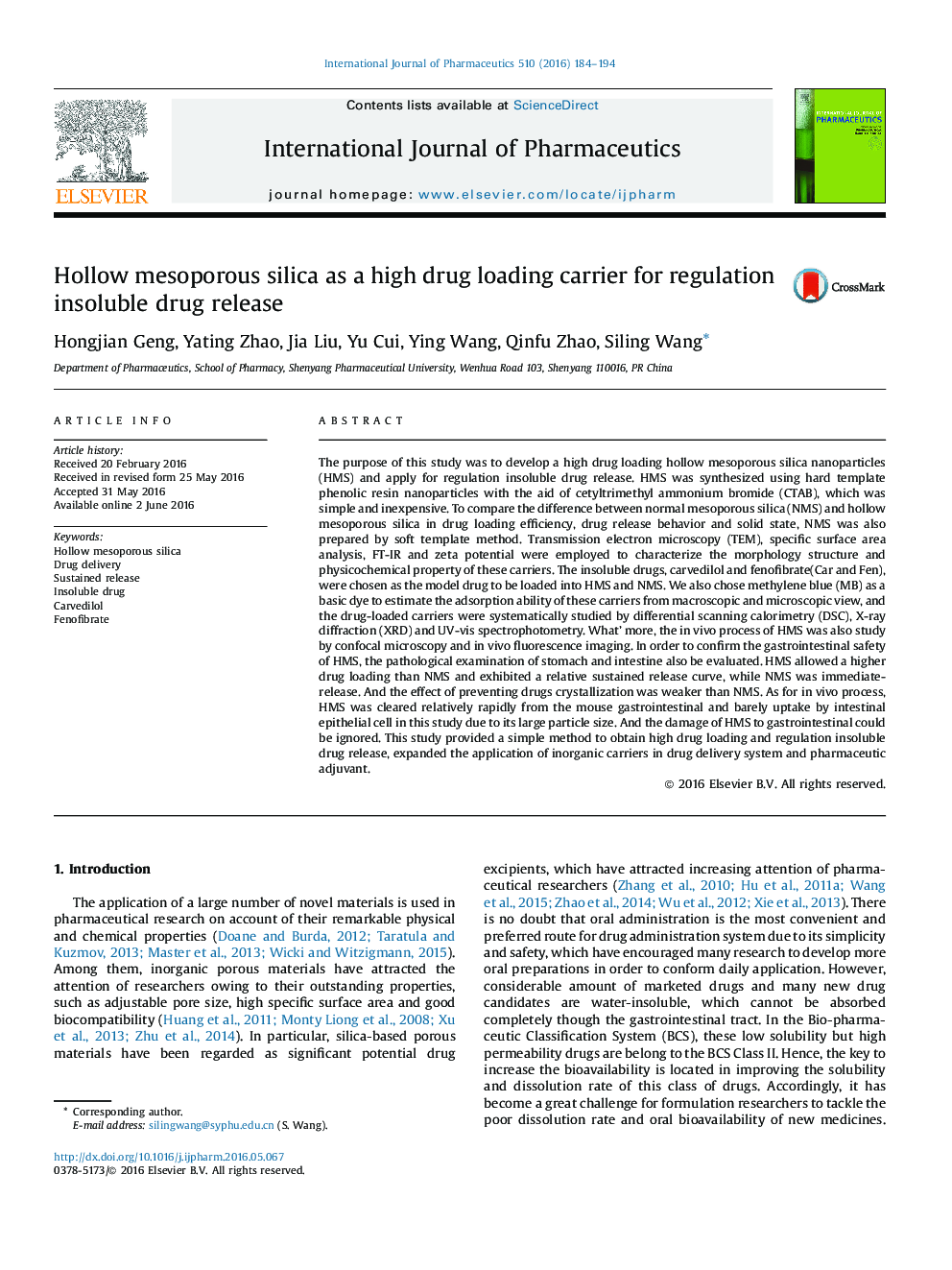| کد مقاله | کد نشریه | سال انتشار | مقاله انگلیسی | نسخه تمام متن |
|---|---|---|---|---|
| 2500820 | 1557311 | 2016 | 11 صفحه PDF | دانلود رایگان |
• Hollow mesoporous silica was synthesized using hard template phenolic resin nanoparticles with the aid of cetyltrimethyl ammonium bromide (CTAB), which was simple and inexpensive.
• Hollow mesoporous silica preformed as a high drug loading carrier for regulation insoluble drug release, which can achieve sustained release.
• The difference between normal mesoporous silica (NMS) and HMS in drug loading efficiency, drug release behavior and solid state were also studied systematically.
The purpose of this study was to develop a high drug loading hollow mesoporous silica nanoparticles (HMS) and apply for regulation insoluble drug release. HMS was synthesized using hard template phenolic resin nanoparticles with the aid of cetyltrimethyl ammonium bromide (CTAB), which was simple and inexpensive. To compare the difference between normal mesoporous silica (NMS) and hollow mesoporous silica in drug loading efficiency, drug release behavior and solid state, NMS was also prepared by soft template method. Transmission electron microscopy (TEM), specific surface area analysis, FT-IR and zeta potential were employed to characterize the morphology structure and physicochemical property of these carriers. The insoluble drugs, carvedilol and fenofibrate(Car and Fen), were chosen as the model drug to be loaded into HMS and NMS. We also chose methylene blue (MB) as a basic dye to estimate the adsorption ability of these carriers from macroscopic and microscopic view, and the drug-loaded carriers were systematically studied by differential scanning calorimetry (DSC), X-ray diffraction (XRD) and UV-vis spectrophotometry. What’ more, the in vivo process of HMS was also study by confocal microscopy and in vivo fluorescence imaging. In order to confirm the gastrointestinal safety of HMS, the pathological examination of stomach and intestine also be evaluated. HMS allowed a higher drug loading than NMS and exhibited a relative sustained release curve, while NMS was immediate-release. And the effect of preventing drugs crystallization was weaker than NMS. As for in vivo process, HMS was cleared relatively rapidly from the mouse gastrointestinal and barely uptake by intestinal epithelial cell in this study due to its large particle size. And the damage of HMS to gastrointestinal could be ignored. This study provided a simple method to obtain high drug loading and regulation insoluble drug release, expanded the application of inorganic carriers in drug delivery system and pharmaceutic adjuvant.
Figure optionsDownload high-quality image (133 K)Download as PowerPoint slide
Journal: International Journal of Pharmaceutics - Volume 510, Issue 1, 20 August 2016, Pages 184–194
